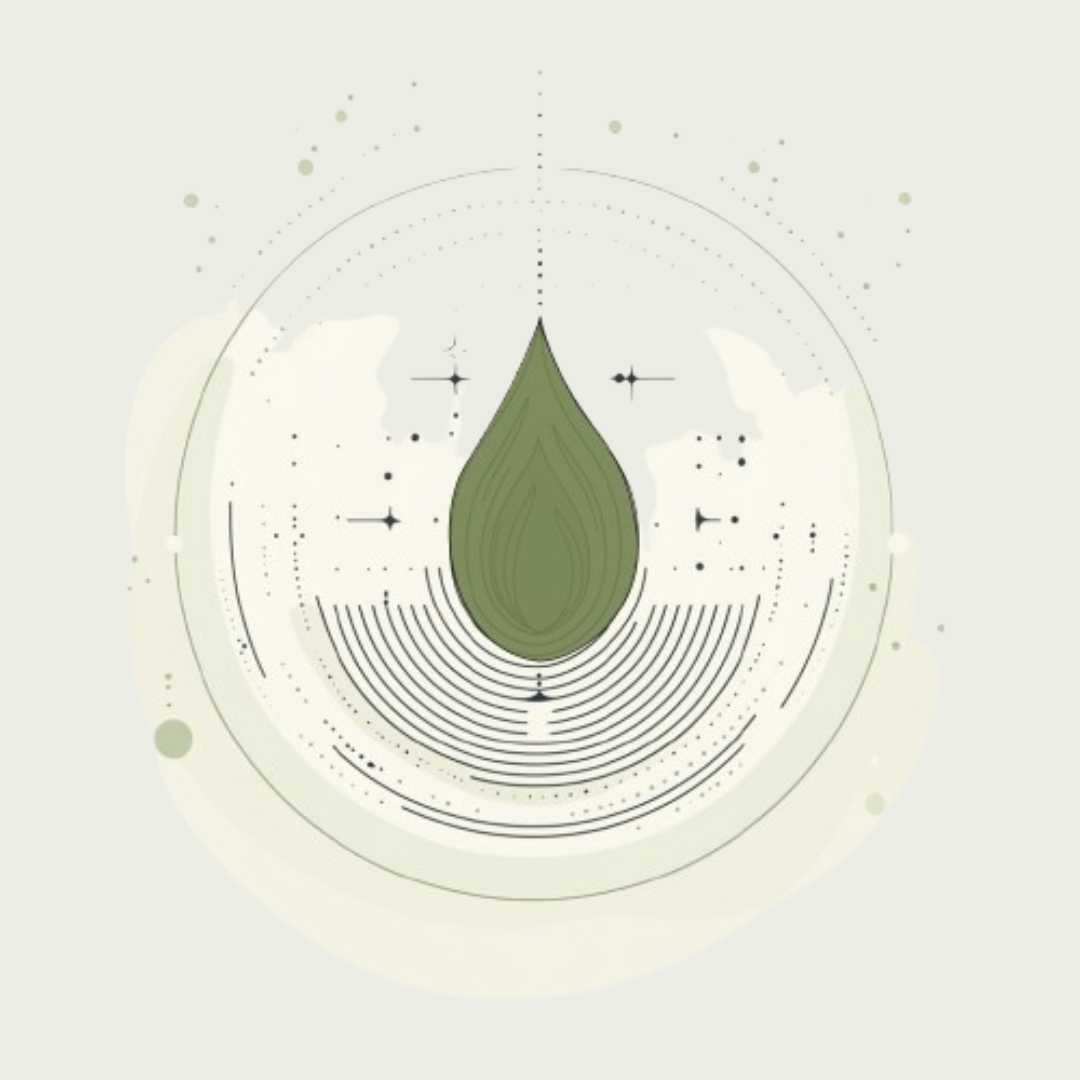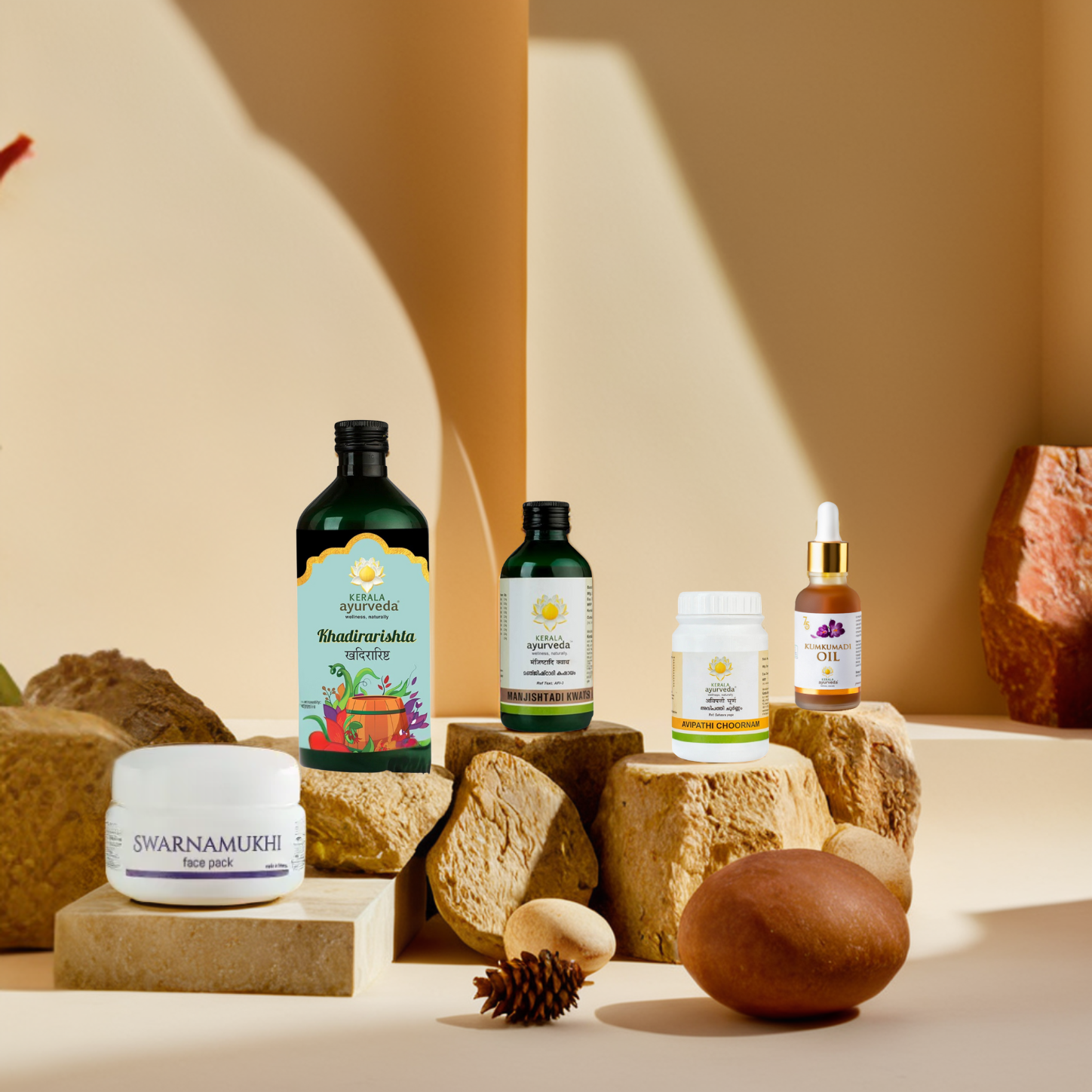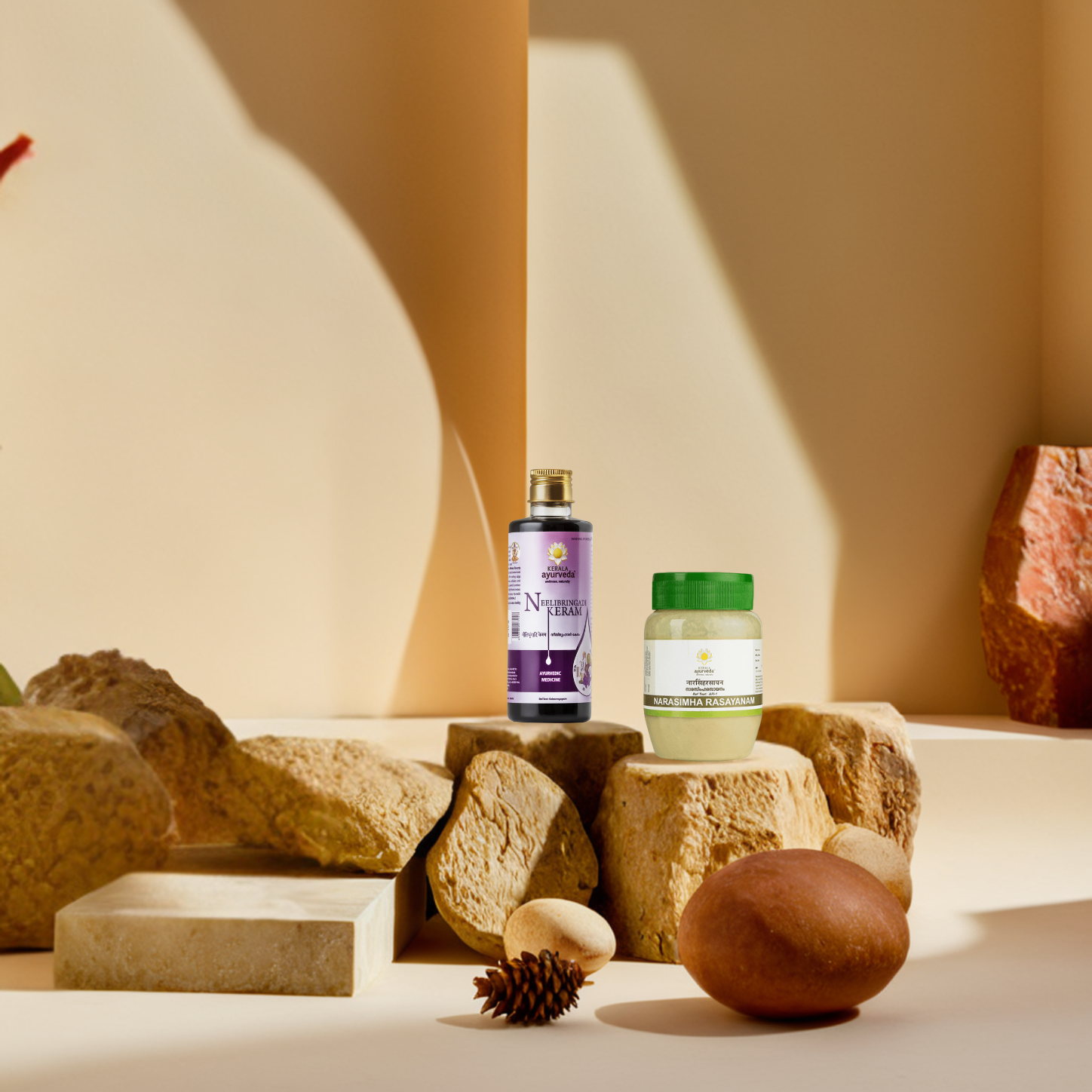Highlights
Have you noticed oily skin, sudden breakouts, dullness, or stubborn tan marks that just won’t fade? While the rains offer a welcome break from the scorching summer, they also bring a unique set of skin challenges. With the right care, monsoon can actually be the perfect season to restore your skin’s natural glow.
Ayurveda gives you simple, natural solutions to keep your skin clear, healthy, and radiant through the rainy months. In this guide, you’ll explore common monsoon skin concerns and learn how to manage them with gentle, time-tested Ayurvedic practices.
The Ayurvedic Science Behind Monsoon Skincare
Ayurveda, the ancient science of life, beautifully categorizes the year into six distinct ritus, or seasons: Sisira (late winter), Vasanta (spring), Grishma (summer), Varsha (monsoon), Sharat (autumn), and Hemanta (early winter). The period from mid-July to mid-September marks Varsha Ritu, the monsoons. This season falls under Dakshinayana or Visarga Kala, a time when the sun's journey is southward, and the body's strength generally tends to wane. Our Agni, or metabolic fire, is often at its lowest during this period. Therefore, embracing the correct dietary and lifestyle practices becomes vital to maintain good health. Cool, rainy days can lead to an imbalance of Vata dosha, which is characterized by dryness, roughness, and lightness, while Pitta dosha tends to accumulate within the body.
Skin Issues and Remedies for Monsoons
While refreshing, the monsoon season can bring about specific challenges for our skin. Knowing how Ayurveda looks at these common skin concerns can make it easier to care for your skin and keep that natural glow.
1. Dullness
The shift from summer's increased cell turnover can leave behind dead skin. Coupled with elevated Vata during monsoon, skin can appear both dull and dehydrated. High humidity, leading to sweating, can further deplete moisture.
Ayurvedic Remedies:
- Ensure adequate hydration by drinking enough water.
- Continue consistent sunscreen application.
2. Oily Skin and Breakouts
Increased humidity often triggers excessive sebum production, leading to oily skin and acne. This can be aggravated by consuming oily foods and overwashing the face.
Ayurvedic Remedies:
- Switch to a lightweight moisturizer.
- Avoid heavy makeup and use water-based products.
- Bathe in lukewarm water.
- Resist overwashing your face.
- Exfoliate gently once a week.
- Apply a face pack of Aloe vera mixed with turmeric for about 15 minutes.
3. Skin Allergies and Infections
High humidity promotes the growth of bacteria and fungi, increasing the likelihood of allergies, fungal infections, and rashes.
Ayurvedic Remedies:
- Wear loose-fitting clothes to allow skin to breathe.
- Keep your skin as dry as possible.
- Practice diligent personal hygiene.
- Avoid wearing socks and opt for open-toed shoes to prevent foot infections.
- Trim your nails regularly.
- Bathe in water boiled with neem leaves, tulsi, and fresh turmeric roots.
Monsoon Skincare Routine
Given the monsoon's tendency to increase humidity and potentially lead to skin issues, establishing a consistent Ayurvedic skincare routine is vital. These rituals focus on external care to cleanse, nourish, and protect your skin during this season.
- Cleansing: Begin with double cleansing to effectively remove makeup, sunscreen, and excess oil, keeping pores clean and reducing sebum buildup.
- Toning: Use a hydrating, natural toner such as cucumber, vetiver, or sandalwood to soothe and nourish the skin.
- Moisturizing: Opt for lightweight, non-greasy moisturizers or light face oils like Nalpamaradi Keram, known for its tan-reducing and antimicrobial properties. Apply and wash off after a short duration, depending on your skin type.
- Face Cream: Consider a gel-based cream for daytime and a light cream for nighttime to maintain skin's suppleness and nourishment. Always apply sunscreen.
- Facial Steaming (Mukha Swedanam): Once a week, steam your face with water infused with Triphala, tulsi, and neem to deep cleanse pores and promote clear skin.
- Exfoliation: Gently exfoliate weekly using natural ingredients like oatmeal, coffee, or sugar, or a gentle Ayurvedic face pack like Kerala Ayurveda Swarnamukhi Face Pack to remove dead skin cells.
- Herbal Gut Cleanse: Support internal cleansing with simple gut detoxifiers like Triphala tablets, as a healthy gut often reflects positively on the skin.
- Hydration (External): While internal hydration is key, washing your face with water boiled with neem leaves can make the most of its antibacterial properties. You can also use a face pack of neem, tulsi, and Aloe vera paste.
Ayurvedic Diet Tips for Monsoon Skincare
Ayurveda emphasizes the strong connection between diet and skin health. During the monsoon, making mindful food choices can significantly support your skin's radiance and prevent imbalances.
- Favor Light and Digestible Foods: Avoid heavy, oily, and greasy foods that can burden digestion and potentially contribute to acne. Instead, focus on easily digestible foods rich in fiber, such as red rice, barley, and moong.
- Incorporate Healthy Fats: To balance aggravated Vata and combat dryness, include healthy fats like nuts and ghee in your diet. Consider Mahathikthaka Ghritham (after consulting a physician) for its skin-enhancing properties.
- Prioritize Warm Hydration: Stay well-hydrated with warm water, herbal teas, and kadhas instead of sugary juices and excessive caffeine, which can hinder digestion.
- Prepare Vegetables Mindfully: Avoid raw vegetables, opting for lightly steamed or sautéed options in ghee with warming spices like black pepper and ginger for better digestion.
- Digestive Aids: Consume a small piece of ginger with rock salt before meals to enhance digestion, which is crucial for healthy skin.
- Foods to Limit or Avoid: During monsoon, it's generally best to avoid stale and fermented foods, as well as curd and leafy vegetables.
Other Ayurvedic Monsoon Skincare Tips
Beyond skincare rituals and diet, Ayurveda recommends several other practices to support overall well-being and promote healthy skin during the monsoon.
- Maintain a Consistent Lifestyle: Resist daytime sleep and prioritize maintaining good personal hygiene to prevent skin issues.
- Herbal Fumigation (Dhoopana): Regularly practice herbal fumigation with antimicrobial herbs like Guggulu, Agaru, and Chandana to disinfect your surroundings.
- Consider Panchakarma: Monsoon is an opportune time for Panchakarma, Ayurveda's deep purification therapy, particularly the Karkidaka Chikitsa practiced in Kerala, known for its rejuvenating and detoxifying benefits.
- Internal Balance: Understand that monsoons often aggravate Vata, leading to dryness and dullness. Counteracting this imbalance through diet and lifestyle is key.
- Kerala Ayurveda Skincare Sets: Explore curated skincare sets from Kerala Ayurveda that are designed to support skin health during this specific season.
Also read: Ayurvedic Treatment for Pimples and Acne: Everything You Need to Know!
Conclusion
To care for your skin during the monsoon season, start by understanding how the season affects it. When you follow a balanced Ayurvedic approach, mindful rituals, smart dietary choices, and time-tested practices, you address common concerns and bring out your skin’s natural, healthy glow.
Kerala Ayurveda is here to support your journey. Explore our curated range of Ayurvedic products and therapies tailored for the season, and bring harmony to your skin, rain or shine. Let your natural radiance shine through, the Ayurvedic way.
FAQs
1. Does high humidity during monsoons worsen acne?
Yes, studies show that both high temperature and humidity contribute to acne flare-ups, especially in tropical regions during the rainy season.
2. How does humidity affect skin barrier function?
High external humidity can increase the risk of eczema, while low humidity impairs the skin barrier and increases dryness. The skin’s water content and elasticity are influenced by ambient humidity levels.
3. Are there preventive measures for humidity-related skin issues?
Using gentle cleansers and maintaining proper skin hydration can help counteract the negative effects of high humidity, such as increased oiliness and susceptibility to infections.
4. Why is it important to adapt skincare routines during the monsoon?
Because climate factors like humidity and temperature have a direct impact on skin integrity and function, adapting skincare routines helps maintain healthy skin and prevent flare-ups of conditions like acne and eczema.





